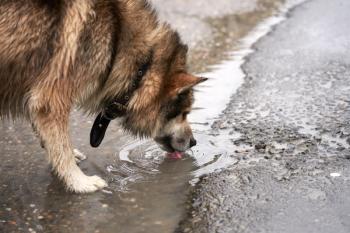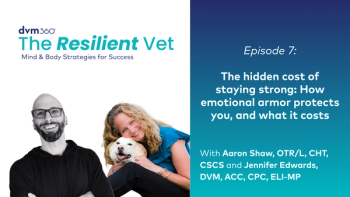
Adult dairy cow mortality (Proceedings)
Mortality rates in the dairy industry are much higher than those in the cow calf or feedlot industries.
Mortality rates in the dairy industry are much higher than those in the cow calf or feedlot industries. Death losses have not been studied very intensively in the dairy industry. Estimates of these death losses are quite variable. Mortality rates reported on the basis of producer response to survey questions are lower than those obtained from dairy record systems. This suggests that in many cases, dairy producers underestimate the amount of adult cow death loss on their operations. The USDA:APHIS:VS National Animal Health Monitoring System (NAHMS) Dairy 2007 survey reported that 5.7% of dairy cows die on-farm across the country each year, an increase from 4.8% of the January 2002 inventory, and 3.8% of the January 1996 inventory. These rising mortality levels represent a problem both in terms of financial losses and compromised animal welfare.
Information from computerized dairy record systems suggests that mortality rates have continually increased over the last 10 years. In some states, adult cow mortality exceeds 10% per year. Very few formal studies have focused on this issue. Most studies of dairy cow mortality have come from outside the United States. The US studies on this issue have been primarily focused on culling and herd turnover rates rather than death losses per se.
The 2007 national survey of dairies in the US showed that approximately 23.6% of dairy cows left herds permanently during 2007, and that approximately 5.5% of these cows were sold to other dairies, while 94% were culled (i.e. sold and not returned to milk production, sent for slaughter). The reasons cows were culled included mastitis and udder problems (23% of culled cows), lameness or injury (16%), other disease (3.7%), reproductive failure (26.3%), and poor milk production not related to these other problems (16%), while other miscellaneous reasons accounted for about 8% of culling. Therefore, on average, the overwhelming majority of dairy cows leaving farms are not fit for sale as dairy production animals, and approximately 50% of these cows are leaving because of disease or injury problems, rather than being selectively removed because of low fertility or milk productivity.
Adult cow death losses appear to be attributable to similar reasons that cows are culled. A recent meta-analysis identified 19 studies between the years 1965 and 2006 that focused on dairy cow mortality in countries with relatively intensive dairy production. While 10 of the 19 studies provided information about causes of death, none of the diagnoses were founded on necropsy evaluation. Only a single study discriminated between cows that were euthanized or died unassisted. Recorded causes of death were relatively uniform across studies and were categorized as: accidents, calving disorders, digestive disorders, locomotor disorders, metabolic disorders, udder/teat disorders, other known reasons, and unknown reasons. The NAHMS Dairy 2007 survey recorded causes of death similarly to those established through meta-analysis, documenting the percentage of cow deaths due to: calving problems (15.2%), scours, diarrhea, or other digestive problems (10.4%), euthanasia due to lameness or injury (20.0%), mastitis (16.5%), respiratory problems (11.3%), poison (0.4%), lack of coordination or severe depression (1.0%), other known reasons (10.2%), and unknown reasons (15.0%).
Cause of death entered in dairy record systems is based on producer, assessment and diagnosis. It appears that relatively few dairy veterinarians are involved in the diagnosis of cause of death. Relatively few U.S. dairy operations perform necropsies in an effort to determine the cause of cow death. The NAHMS Dairy 2007 study reported that necropsies were performed on only 13% of operations and only 4.4% of cow deaths received a thorough postmortem examination. Therefore, virtually all studies to date of dairy cow mortality are based on producer assessment rather than veterinary diagnosis. Determining the cause of death provides invaluable information for preventing future deaths and improving herd health.
At present no specific reason has been identified for the increase in dairy cow death rates. The producers and veterinarians appear to have attributed increasing death rates to a variety of causes. Some have questioned whether the new federal regulations regarding down dairy cows and neurologic disease may have artificially increased recorded death rates. This seems unlikely since the death rates have been increasing prior to the implementation of this rule. Others have suggested that specific disease problems such as hemorrhagic bowel disease may be increasing death rates. Again, this seems unlikely because the increased mortality rates far exceed the incidence of any specific disease problem. Any conjectures on the cause of increased mortality are difficult to validate without specific diagnoses.
Dairy record systems appear to be an unreliable source of information concerning cause of death since these diagnoses are made by producers or herd managers.
We have been studying the phenomenon of dairy cow mortality over the last couple years. Our findings suggest that dairy producer assessment of proximate cause of death is inaccurate at least 50% of the time. Our results also show that there are multiple causes of dairy cow death. Mortalities tend to occur much more frequently in the early part of lactation, coincident with increases in other health problems. Increased disease rates on dairies appear to be closely related to increased death rates. It seems reasonable to suggest that numerous health problems in dairy cows are not recognized early enough or not treated properly to promote optimal outcome.
Dairy cattle death losses are an extremely important problem. Not only are these losses an economic disaster, they also represent very substantial problems with animal well-being. This would seem to be an issue requiring substantial veterinary attention, but at present, it does not appear that veterinarians or producers have the information required to manage the problem appropriately.
Farm necropsy should be an invaluable tool to help assess cause of adult cow death. Record systems that monitor cause of death will be very important. Our studies suggest that at least 50% of cow death losses are attributable to causes that could be mitigated with proper management.
Newsletter
From exam room tips to practice management insights, get trusted veterinary news delivered straight to your inbox—subscribe to dvm360.




